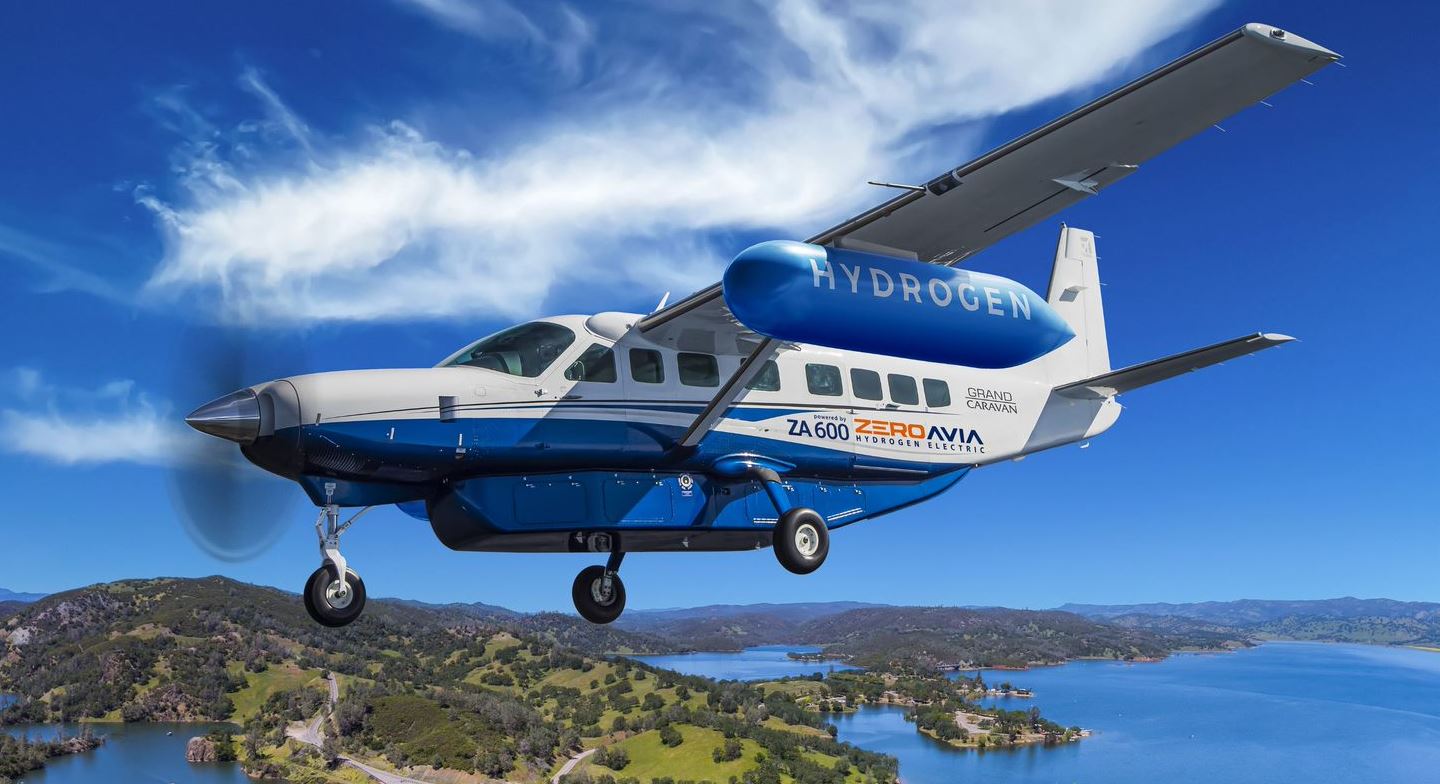
ZeroAvia, a producer in zero-emission aviation, today announced it has entered into a non-exclusive Joint Development Agreement with Textron Aviation supporting ZeroAvia’s development of hydrogen-electric, zero-emission powertrains for the Cessna Grand Caravan (208B) aircraft.
In a press release ZeroAvia say it “will obtain a Supplemental Type Certificate (STC) to retrofit the Grand Caravan single-engine utility turboprop with the ZA600 zero-emission powertrain, targeting commercial passenger and cargo operators.
“The Cessna Grand Caravan is designed and manufactured by Textron Aviation. Its high-wing design makes it a strong candidate for mounting hydrogen fuel tanks under the wings, ensuring operators can maintain seat capacity or cargo space, while transitioning to true zero emission propulsion systems.
“ZeroAvia will develop its ZA600 powertrain system for the Grand Caravan with data, engineering and certification support provided by Textron Aviation. ZeroAvia aims to obtain certification for the 600kW powertrain as early as 2025, enabling customers to operate zero-emission flights.
“The Cessna Grand Caravan platform has seen more than 2,400 aircraft delivered worldwide since the aircraft was introduced, representing enormous potential for a shift to clean propulsion. ZeroAvia has already announced several agreements with operators and lessors in relation to conversions of the Grand Caravan.
“This agreement with Textron Aviation adds to significant prior commitments from other aircraft original equipment manufacturers (OEMs) and operators to ZeroAvia’s powertrain technology over the course of the last few months. ZeroAvia is already well advanced in retrofitting its system into a 19-seat Dornier 228 aircraft at its R&D location at Cotswold Airport in the UK, with first test flights anticipated over the next few weeks. The company is actively developing the market for its ZA600 product with different 9-19 seat airframes, while concurrently developing its ZA2000, 2-5MW engine class for 40-80 seat aircraft with an entry-into-service target of 2027.
“ZeroAvia’s work in developing its 600kW system through to a certifiable design is part of the HyFlyer II project, supported by the UK Government’s Department for Business, Energy and Industrial Strategy (BEIS), Aerospace Technology Institute (ATI) and Innovate UK through the ATI Programme.”
For more information
(Image: ZeroAvia)

